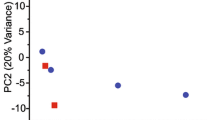Abstract
Weakly electric fish produce a communication signal, the electric organ discharge, that is species specific, and in many species, sexually dimorphic. Because the neural circuit that controls the electric organ discharge is relatively simple, it is an excellent model in which to study both the biophysical mechanisms underlying a rhythmic behavior and the neuroendocrine control of a sexually dimorphic behavior. By studying the effects of ion channel blockers on neurons in the medullary pacemaker nucleus, I pharmacologically characterized three ionic currents that influence the pacemaker rhythm, and thus electric organ discharge frequency, in the gymnotiform fish, Apteronotus leptorhynchus. These currents included a tetrodotoxin-sensitive sodium current; a potassium current that was sensitive to 4-aminopyridine; and a calcium current that was sensitive to nickel and cadmium, but resistant to specific blockers of L-, N-, P-, and Q-type calcium currents. The pharmacological profiles of the ionic currents in the pacemaker nucleus are similar to those of ionic currents involved in pacemaking in other neuronal oscillators. Because these ionic currents dramatically influence pacemaker firing frequency, which is directly related to electric organ discharge frequency, these ionic currents are likely targets of steroid hormone action in producing sexual dimorphisms in electric organ discharge frequency. Additional studies are needed to determine how these ionic currents interact to generate the electric organ discharge rhythm and to investigate the possibility that sexual dimorphism in the electric organ discharge results from the actions of gonadal steroids on these ionic currents.
Similar content being viewed by others
Author information
Authors and Affiliations
Additional information
Accepted: 3 June 1999
Rights and permissions
About this article
Cite this article
Smith, G. Ionic currents that contribute to a sexually dimorphic communication signal in weakly electric fish. J Comp Physiol A 185, 379–387 (1999). https://doi.org/10.1007/s003590050398
Issue Date:
DOI: https://doi.org/10.1007/s003590050398



